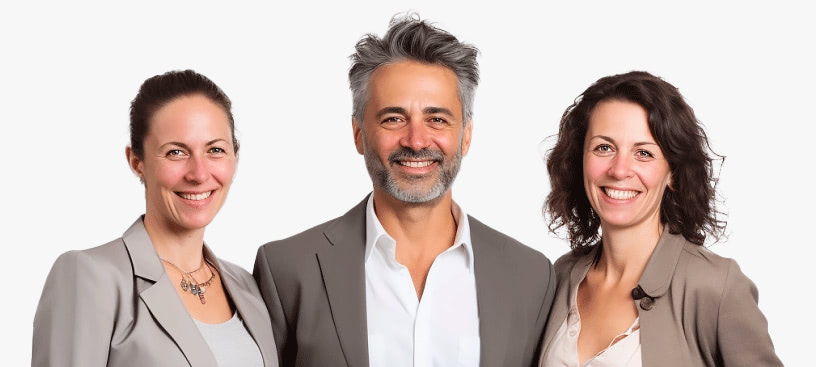People Also Ask: How to Change It, How to Improve It
One of the most useful search elements Google empowers a content writer with is the “People Also Ask” box.
Google gives a content writer lots of clues on what should be included in an article, but not everyone is taking advantage of these clues.
Would you like to create more useful and better-structured content?
Any writer would readily reply “Yes” to that.
Then here’s the most useful tool you will likely be already using (but probably not to its fullest potential): Google.
Sections
- What Are “People Also Ask” Boxes?
- Benefits of Using “People Also Ask” for Content Marketing
- Strategies to Leverage “People Also Ask” for Content Optimization
- Practical Ways to Add “People Also Ask” Questions to Blog Posts
Let’s see how People Also Ask boxes can turn useful to a content creator:
What Are “People Also Ask” Boxes?
“People Also Ask” is Google’s newer search element that displays questions related to the current search query. Note: People Also Ask is different than People Also Search For (PASF).
The questions may not even contain your actual search query, but it will somehow extend it:
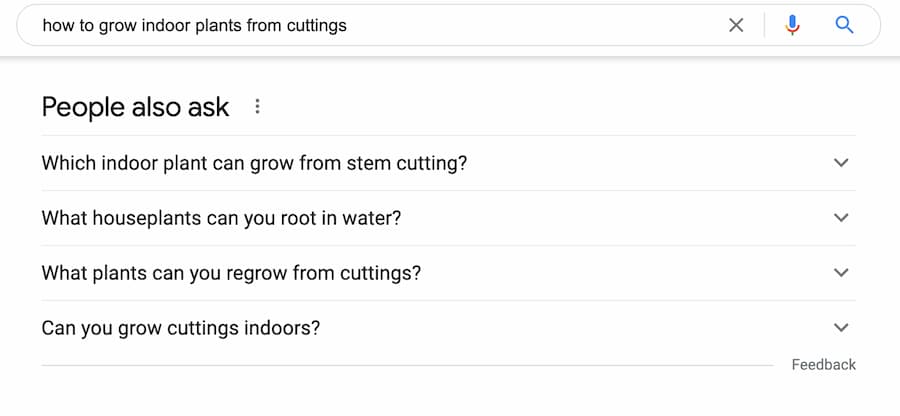
This function not only aids users in refining their search but also presents a unique opportunity for marketers to understand and target specific user intents.
There are generally two types of questions that may be included in the “People Also Ask” boxes:
- Questions that clarify the current search query (Making it more specific and hence easier to answer/solve)
- “Follow-up” questions, i.e., those that may interest a user after he/she finds an answer to his/her current query.
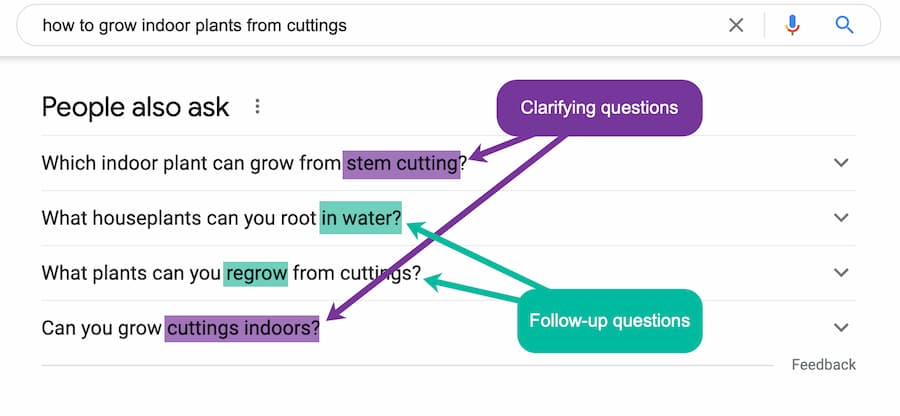
Both of these types are obviously of interest to content creators because they allow them to better understand any topic and browsing journeys that can result from any search query.
According to Mozcast, People Also Box currently appears for 83% of Google’s search queries
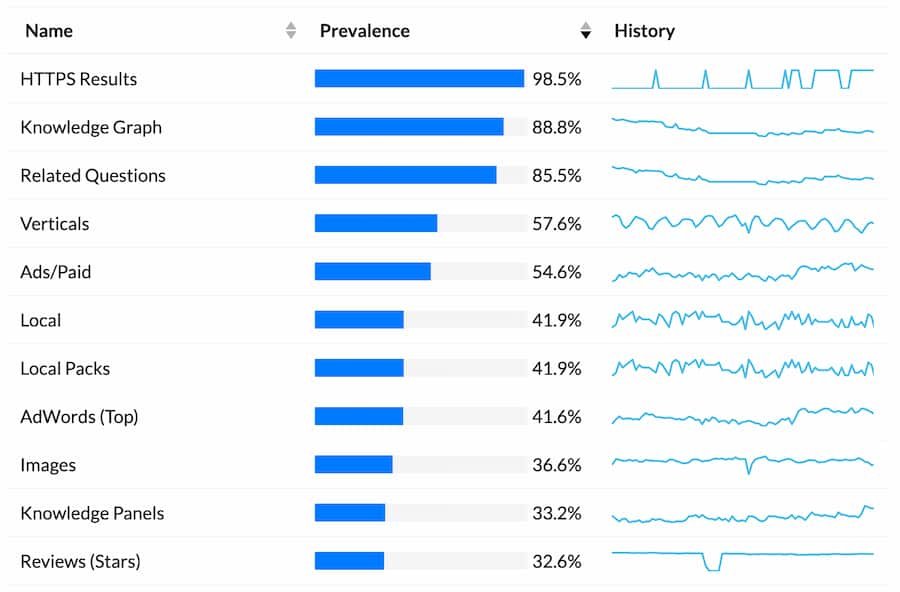
Screenshot as of September 2021
Benefits of Using “People Also Ask” for Content Marketing
- Enhanced Visibility: Appearing in PAA boxes can significantly increase your content’s visibility.
- Targeted Content: By answering specific questions, you cater directly to user intent, improving the relevance and value of your content.
- SEO Boost: Targeting questions can help you rank for long-tail keywords, a vital component of a robust SEO strategy.
Strategies to Leverage “People Also Ask” for Content Optimization
Keyword and Question Research
Utilizing PAA to discover relevant questions and long-tail keywords can dramatically improve your content strategy. Tools like SEMrush and Ahrefs offer functionalities to track these questions.
Here’s how to use them:
- Monitor PAA boxes related to your primary keywords.
- Compile a list of recurring questions within your niche.
Create More In-Depth Content
Google has developed a “People Also Ask” algorithm based on what their current users tend to research next.
Ready to Take the Next Step?
Get in touch with our team and we’ll take the first steps toward building a reputation repair campaign.
By reverse-engineering these questions, writers can get a good idea of what their target users will likely be interested in when searching for a particular search query.
Creating content that directly answers PAA questions can significantly improve your chances of ranking in organic search results and within PAA boxes.
Consider these tips:
- Directly Answer Questions: Craft content that provides clear, concise answers to PAA questions.
- Use Questions in Headings: Incorporate PAA questions into your H1 or H2 tags to improve SEO.
Enhancing Existing Content
Optimizing current content to include answers to PAA questions can also improve your visibility. Audit your existing content to:
- Identify gaps where your content doesn’t answer relevant PAA questions.
- Update and expand your articles to cover these topics comprehensively.
Understand Various Browsing Journeys
The real beauty of these boxes is that they are dynamic: Google will generate more relevant questions based on the one you click (or tap if you are on a mobile device).
Clicking those questions gives you more and more angles to explore and cover in your content. It also gives you a good idea of how your target readers may explore any topic.
This is why these questions are sometimes referred to as “intent questions,” i.e., those that help identify and satisfy each searcher’s intent:
Providing related questions to users can help users who use un-common keywords or terminology in their search query to identify keywords or terms that are more commonly used to describe their intent.
Questions can be:
- Informational: Seeking knowledge about a topic.
- Navigational: Looking for a specific website or page.
- Transactional: Ready to purchase or perform an action.
Align your content with the specific user intent for better engagement and conversions.
Consequently, the People Also Ask boxes help content writers understand how their target readers explore the given topic and adjust their content to better serve all those different journeys.
Practical Ways to Add “People Also Ask” Questions to Blog Posts
Find the Best Way to Answer Many of the Related Questions
When clicked, each question shows a quick answer to that question sourced from a third-party page. Google uses its “Featured Snippet” algorithm to find those answers.
Among other things, these quick paragraph-sized answers can also provide a good learning opportunity: They teach a writer to provide concise answers that are easy to understand and engage with.
Organize Questions by Topical Relevance and Intent
The list of questions can actually be quite endless: Just keep clicking People Also Ask suggestions that look the most relevant to your angle, and you will see more and more questions unfold as you go:
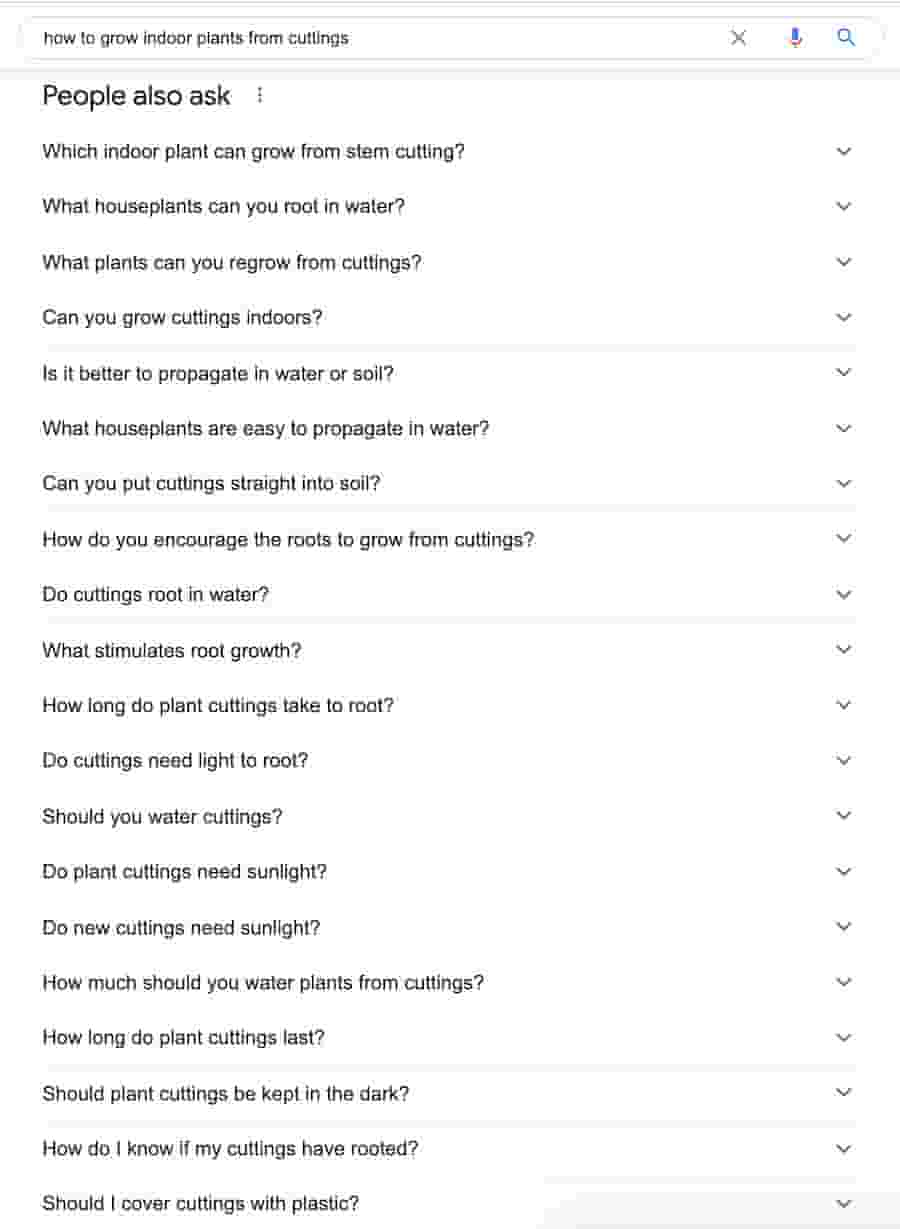
To better understand these questions, try running Text Optimizer, which uses semantic analysis to predict some search patterns of your target audience. Google uses a similar algorithm to generate their “People Also Ask” suggestions:
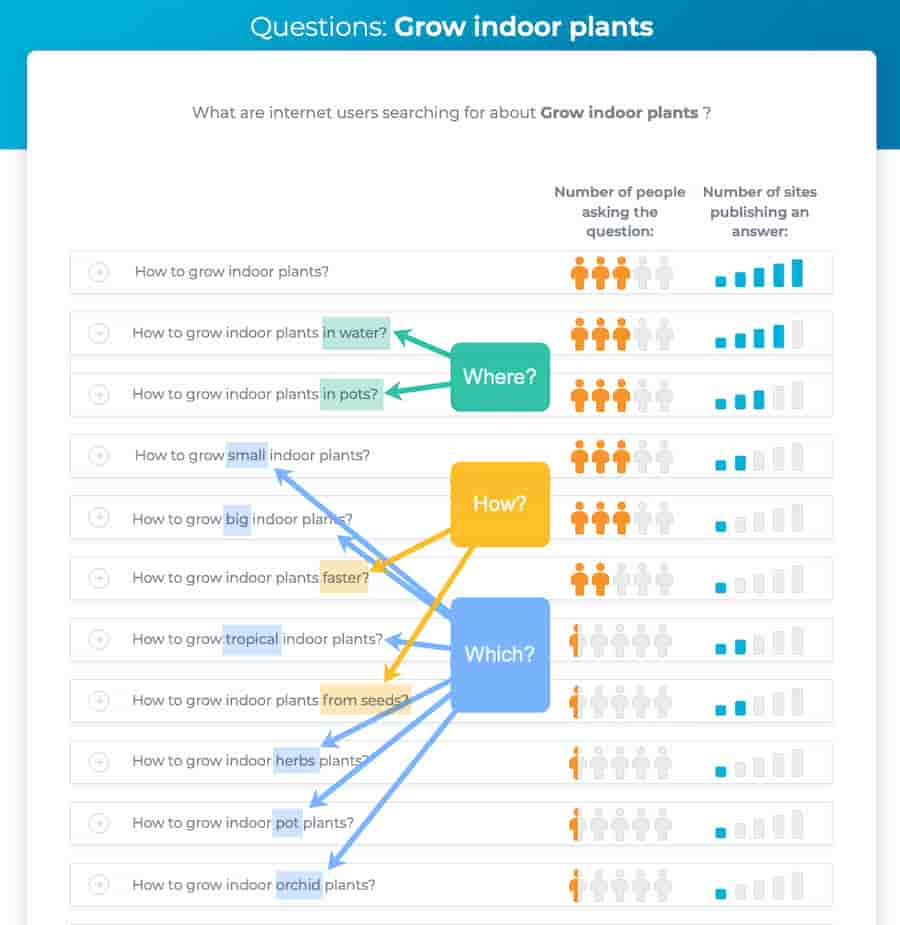
Text Optimizer gives a birds-eye view of relevant search patterns and provides a great starting point for a writer. Copy any of these questions and use the People Also Ask boxes to extract more related and follow-up questions.
Text Optimizer helps cluster those related questions by topical relevance. Once you know those groups, managing endless People Also Ask results becomes doable!
Structure Your Content More Effectively
Effective content structure is as important for your content strategy success as content quality. Well-structured content ranks higher and engages more people, driving them further into an article.
Structuring your content means breaking it up into sections and subsections by using H2-H3 subheadings.
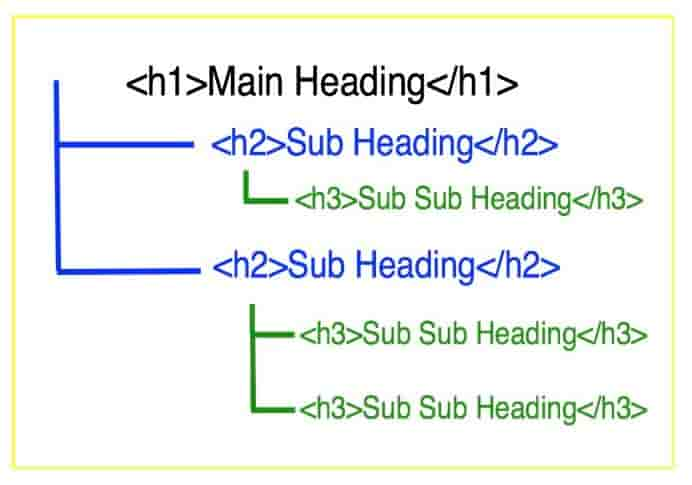
Subheadings make content easier to scan and faster to understand. Multiple eye-tracking studies have identified various content scanning patterns people may be exercising when going through text content. But all of them confirm that when there are subheadings that break up the text, people’s eyes are always drawn to those first.
Content Writing and Structuring Formula
Using questions as subheadings is almost always a good idea. The thing is, asking a question is an effective way to get people to pay attention. Asking a question triggers a natural answering reflex in human beings. This psychological concept is referred to as “instinctive elaboration” and it hacks our brain into thinking about the answer to a question.
In other words, asking questions in your subheadings (which are the most prominent part of your content) will drive more of your readers deeper into your content.
And a “People Also Ask” box is often your ready-made free list of questions to build into your content structure.
With time, my primary content writing and structuring tactic has been formed as follows:
- Once I know my target keywords, I search for various People Ask Results and write some of those questions down
- I also use secondary keywords (those with lower search volume) to create some of those subheadings as well
- Next, I write a one-paragraph answer underneath each subheading
- Finally, I elaborate on each question below each of those paragraphs as needed
This tactic helps my content rank in the “Featured Snippets” and People Also Ask boxes, as well as creates a highly productive content creation routine.
As far as you can see, People Also Ask results almost define and direct my writing flow, providing a starting point for my content creation process.
To make this tactic even more effective, use those subheadings to generate an on-page table of contents, allowing people to quickly jump to a particular question that interests them most.
Final Thoughts
Google’s People Also Ask helps content writers to better understand their target topic and brainstorm more engaging content ideas. But more importantly, the search feature can help you improve every single article you are working on by encouraging you to create more in-depth, better-structured content. Good luck!
How Can We Help You?
From negative content removal to suppression, correction, and ratings and review management, our experts can solve nearly any online brand issue.
What are People Also Ask boxes?
People Also Ask boxes are a search element that displays questions that are related to the current search query. The answers to questions in People Also Ask boxes are directly related to the search query.
How can I get my content to rank in People Also Ask snippets?
Creating well-structured content is key to ranking in People Also Ask snippets. Do your keyword research. Search People Ask Results based on those keywords and write some questions down. Use secondary keywords to create subheadings. Elaborate on each subheading with well-researched, relevant content.
How should I structure my content?
Well-structured content is broken up into sections and subsections with H2-H3 subheadings. Your content will effectively answer whatever questions your reader had before finding your page.
